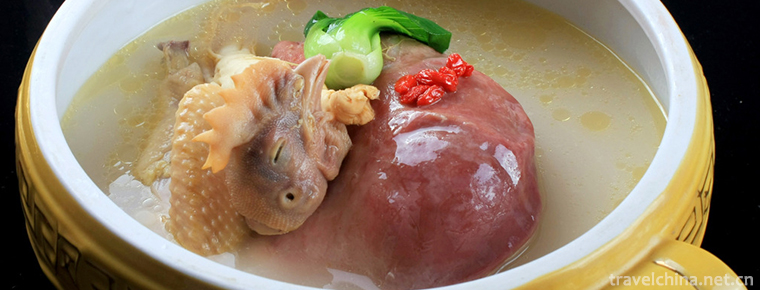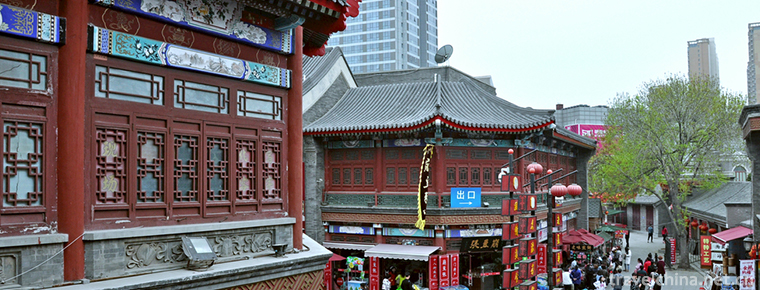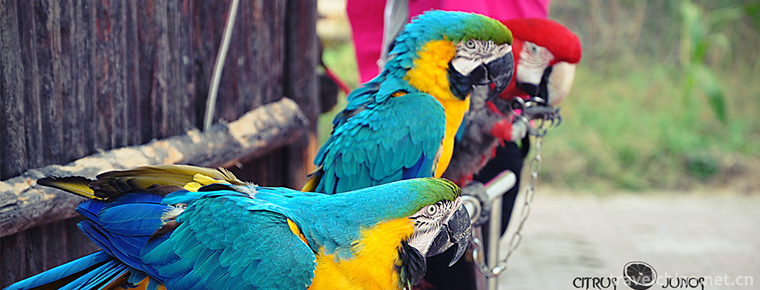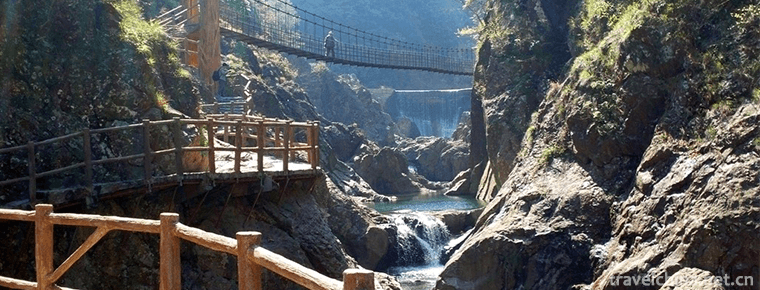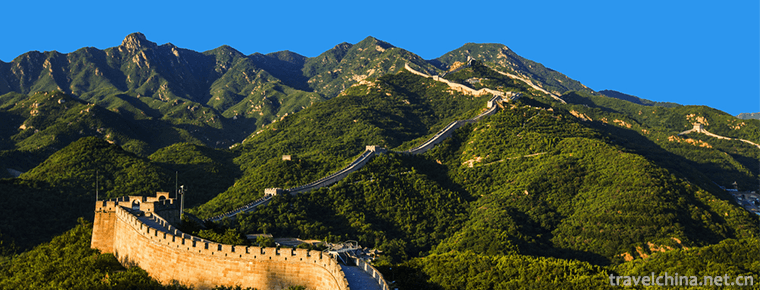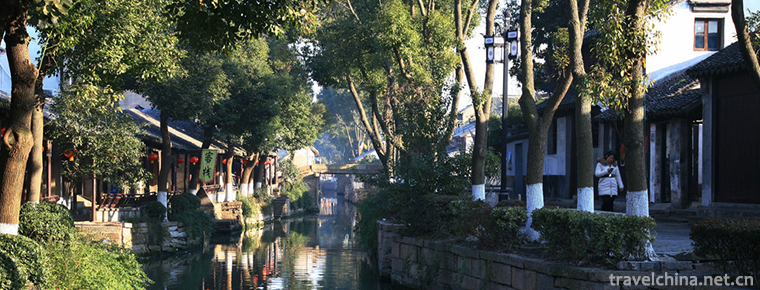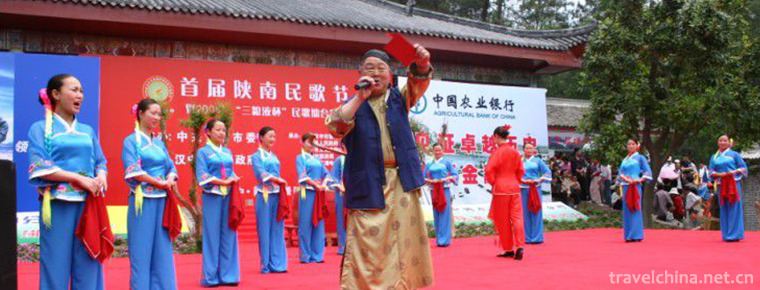Qilihai National Wetland Park
Qilihai National Wetland Park is located in the northeast of Tianjin, located in Ninghe District of Tianjin, 30 kilometers away from Tianjin urban area, 100 kilometers away from Beijing and 40 kilometers away from Tangshan. Qilihai is a National Nature Reserve of ancient coast and wetland approved by the State Council in 1992. It is the largest natural wetland in Tianjin and a rare oasis in the Tianjin-Beijing-Tangshan Delta. It is a brilliant pearl inlaid on the coast of the Bohai Sea and the land of Jingu, Tianjin's largest backyard.
At present, Qilihai Wetland Park has been ordered to close down by Tianjin Environmental Protection Bureau because it has not been accepted for environmental protection after the completion of the construction project. In May 2017, the National Tourism Administration gave it the delisting treatment. On July 29, 2017, the First Environmental Protection Supervision Group of the Central Committee reported to Tianjin that Ninghe District has illegally constructed wetland parks in Qilihai Wetland Core Zone and Buffer Zone of Tianjin Ancient Coast and Wetland National Nature Reserve, and that the municipal Marine Department has repeatedly approved tourists to enter the core zone of the reserve; and that the Municipal Land and resources department has never illegally occupied the land of the reserve. To implement supervision.
Traffic information
Self-driving travelling
1. Tanggu-Tangcheng Expressway-Qilihai
2. Beijing-Beijing-Tianjin Expressway 100km-Lutai-Jinning Expressway-Qilihai Export
3. Tangshan-Lutai-Tangjin Expressway-Binbao Expressway-Qilihai Exit-Left Turn
4. Tianjin - Jinzhonghe Street - Jinji Expressway - less than 5 km from toll station - turn right Lutai direction - Jinning Expressway - Huaidian New Town Exit - turn left - turn left at the end of the road
5. Tanggu-Changshen Expressway-Qinghe Farm Down-Left Turn-Fast to Yonghe Bridge-Haiqing Road Right Turn
6. Wuqing-Beijing-Tianjin Expressway-Turn right to Lutai Direction-Jinning Expressway-Qilihai Export
7. Wuqing-Yangbei Highway-Qilihai Avenue
Bus
1. Take No. 570 (Tianjin-Lutai Air Conditioning Line) at the bus hub of Tianjin Station and get off at the gate of Qilihai National Wetland Park.
2. Take the bus to Lutai on the Great Hutong.
Origin of scenic spots
The Qilihai Sea is 20 kilometers east-west, 5 kilometers north-south and 100,000 mu square. This is the area of today. Looking back, in the early days of the founding of New China, the area of the Qili Sea is comparable to the two large areas of today. In the Ming and Qing Dynasties, according to the Records of Ming Shizong, it was recorded that "the seven-mile sea is 250-mile wide", which is equivalent to three or four large ones today. People can't help asking: Why is the Qilihai Sea so big?
Some people say that the former Qilihai Sea is divided into Qianhai and Houhai, from Biekou Village to Huaidian Village to the south, seven miles apart, and from Biekou Village to North Haibei Village to Houhai, also seven miles apart, so it is called Qilihai. But that's only part of the Seven Mile Sea. The Xihai, Panzhuang, Jiajia and Huaidian townships are obviously excluded.
The name of Qilihai actually has a legendary story.
Long, long ago, the Qili Sea was still a part of the Bohai Sea, and gradually receded into the sea, forming a lake adjacent to the Bohai Sea. Legend has it that there is a huge water monster in this lake. He is smooth and round, shining with oil black, and his mouth is as big as a hole. Every night, he comes out of the water and makes a strange roar like thunder. When losing temper, the cloudy wind whistles, the cloudy waves blow, the sewage flows across, and the people around them are not peaceful. In order to surrender the water monster, people do not know how many times they have fought against it. However, once they have fought, once they have failed, even though they are full of anger, they can not do anything about it. One night, people sat around the village to discuss countermeasures. An old man with white hair passed by. Lang Lang said, "Rainfall is strange. Don't panic. A big river goes southeast. The flute sounds, the gods appear, nine days of Flowing Clouds falling Yutan. People don't understand it. When they want to interrogate again, they find that the old man has disappeared, and there is only a jade flute on the ground. People suddenly realize that this is the immortal pointing out the maze ah! uuuuuuuuu
So, men, women, children and old swing to battle, digging river more than, I do not know how many days and nights, a big river finally digged.
Watermonsters see the lake shallower and shallower, jump up, suddenly the sky is filled with dark clouds, gusty wind gusts, the ground roaring floods, flooded farmland, swallowed up their homes. Suddenly people thought of the old man's words and took out the jade flute to play. Suddenly, there was a crack in the sky. A Golden Kirin came out and rushed straight to the water monster. When the water monster saw Kirin, he opened his mouth to fight. The two sides fought in a group. All of a sudden, the sky was cloudy and the sky was dark. Finally, Kirin seized the opportunity to kill the monster in one gulp, and the monster sank into the sea. Kirin uniformed the water monster and stopped from time to time to look for food and drinking water. Because people have always regarded Kirin as a God and a symbol of auspiciousness. Sure enough, the longer the grass eaten by Kirin grows, the more prosperous it is. The water that Kirin has drunk changes from salty to sweet. From then on, this side has become a scene of abundant water and grass, fish and crabs in groups, birds and flowers, men and women weaving, fishing and singing.
So people never forget Kirin's kindness and call this thousand hectares of smoke wave Kirin Sea. Later, it gradually became Qili Sea.
Characteristics of scenic spots
Rare animals
Qilihai is not only the largest reed producing area and important aquatic product base in the city, but also a paradise for birds. There are more than 200 kinds of birds. Its oyster beach is the largest, most widely distributed and most clear sequence of ancient coastal relics discovered so far in the world. It is of great value to the study of oceanography, wetland ecology and other disciplines.
On the vast surface of the water, there is a bird island of Xingtuo Reservoir covering 150 mu. The island is covered with reeds and weeds, and the shallow water at the edge of the mound allows birds to see fish clearly. Workers placed eight cameras on Bird Island. After one year, the footprints of the first and second-class rare birds of Oriental Stork, Remaining Gull, Swan, Spoonbill and other countries were left in the monitoring video. More than 50 videos of bird life were collected. With the improvement of living environment, the species and number of birds on the island have increased dramatically, up to 1000 at most.
The data show that 181 species of birds have been found in Qilihai wetland, 2 species and 21 species of birds under national protection at grade I and II, 5 species of endangered and vulnerable birds in the world's endangered bird red paper, 4 species of migratory waterbirds with special significance in Asia-Pacific region, 43 species and 111 species of birds listed in the China-Australia and China-Japan Migratory Bird Protection Agreement respectively
Birds of the Qili Sea:
The Qilihai Sea is an important post station for birds from Australia and Southeast Asia to East Siberia. According to the statistics of the bird census in Tianjin, 235 species of birds belonging to 48 families and 17 orders were found in Tianjin, and 182 species belonging to 39 families and 16 orders were found in Qilihai wetland, accounting for 94.12%, 81.25% and 78% of the total in Tianjin. According to the time spent in the Qili Sea and the living conditions of birds, there are 21 species of birds, 100 species of travelling birds, 34 species of summer migrating birds and 27 species of winter migrating birds. The endangered or key protected birds are: 12 species of birds, including white crane, black crane, Chinese salamander duck, golden sculpture, white shoulder sculpture, jade belt sea sculpture and so on, and 21 species of birds are protected at the second level. Following is a brief introduction of several birds for you:
Seagull: The most common waterfowl in the Qili Sea. Especially in the fishing season, the news of seagulls flies from all directions, gathering thousands of people, adding infinite vitality to the Qili Sea.
Red-crowned Crane: State-level key protection of birds. White feathers, like snow, red top, are not only the embodiment of beauty, but also the symbol of purity and elegance. In recent years, with the improvement of ecological environment, more and more red-crowned cranes come to the Qili Sea.
Silver gull: a species of Euclid. Big, snow-white, light and handsome flying posture, called crisp and pleasant, often haunts the ponds and marshes of the Qilihai Sea.
White Swan: White as jade, flying in good shape. For the second-level national key protection of birds.
Oriental Stork: State-level protection of birds. Large rare birds. There are 2500-3000 in China. They often live in swamps, rivers, lakes and ponds, feeding on small insects, small fish and plant seeds. The walking is light and vigorous, and the flying posture is graceful.
Tern: After mid-late April, a large number of terns flew to the Seven Mile Sea. The birds are not big, but they are powerful. They occupy a territory and other birds are hard to get close to. From May to September, they lay eggs and hatch chicks.
Fish:
Fish and shrimp abound in the Qili Sea. There are more than 30 kinds of fish such as carp, crucian carp, grass, silver carp and loach. Because of the vast waters, excellent water quality, abundant aquatic plants and abundant natural bait, it grows fast and tastes good.
Seven Li crab
Qilihai ecological crab grows in the vast reed marsh with pure water quality, feeding on small fish and shrimp, plankton and grass roots and tender leaves. Its remarkable feature is that the shell is black and white. The meat is tender and delicious, the female crab is yellow and the male crab is full of oil. It can be regarded as a treasure in aquatic products. Qili sea crab was a tribute to the court in Ming and Qing Dynasties. In 2006, it was certified by the People's Republic of China as a rare green food and a good gift for relatives and friends.
Wetland
The bright green pearl Qilihai Sea is low-lying and perennial water accumulation, with a general annual landscape of 3-40,000 mu in water area and 50,000 mu in reed area. Chaobai River and Jicanal are connected with the upstream Yuqiao Reservoir, and Yongding New River and Beijing Sewage Discharge River are connected with them. In the region, the rivers are vertical and horizontal, with braided rivers; swamps are all over the land and depressions are widespread; reeds are bushy and grass is competitive; birds are gathered, fish and crab are fat, highlighting the unique primitive, quiet, beautiful and hazy beauty.
The Qilihai Sea is rich in natural resources and fully demonstrates its special ecological functions. Its air is fresh and the content of negative oxygen ions is tens to hundreds times higher than that in the central area of big cities. It is known as the "natural oxygen bar" and "green lung leaf" in Beijing-Tianjin area. It has become the regulator of temperature, humidity and air quality in Tianjin area. Its gorgeous natural scenery creates a quiet and beautiful environment for Tianjin, which can purify the air quality in Beijing-Tianjin area and regulate the microclimate in the region. Flood control and detention play an active role in promoting.
Rare plants
The gene bank of biodiversity is rich in wild animal and plant resources of Qilihai Sea. There are 41 families and 153 species of wild plants, accounting for 93% of wetland plants in Tianjin coastal area. Some edible, such as the skin, saline saline saline, purslane, purslane, green purslane, small thistle, Jerusalem artichoke, purslane, bitter lettuce, barnyard grass, etc., used to fill the hunger, now on the high-end hotel table. Some medicines can be used, such as Datura, Cnidium mongolicum, plantain, acid slurry, Chinese tonic herb, Leonurus heterophyllus and so on. They are quite effective in clearing heat and detoxification, relieving cough and phlegm, calming Qi and lowering blood pressure. Some are more rare, such as wild soybean, which is listed in the Red Paper of China's Rare and Endangered Plants, while wild mung bean is an important genetic plant to cultivate good varieties.
Main scenery
Bird Island
On the vast surface of Qilihai Wetland Reserve, Bird Island of Xingtuo Reservoir, covering 150 mu, is in the center. In order not to affect the life of birds, in the past, the staff could only observe birds with observation mirrors hundreds of meters away. They could only roughly distinguish the species of birds, and could not leave information. Workers installed eight cameras on Bird Island. Through eight high-definition cameras with night vision function on Bird Island, remote real-time observation of bird activities was carried out, and full coverage of video signals was achieved. In the video, the living materials of the first and second-class rare birds of Oriental Stork, Remaining Gull, Swan, White Spoonbill and other countries are left behind. More than 50 videos of bird life were collected. With the improvement of the environment, the species and number of birds have increased dramatically, up to 1000 at most. Especially the white swan, which used to have only a few, now has more than 40, and the white spoonbill has also come more than 10. In order to allow birds to live and migrate in the original ecological environment, Bird Island has been listed as a no-man's land.
Milu deer Township
"Deer is not deer, camel is not camel, cow is not cattle, horse is not horse" - the "four unlike" is the national first-level protection of animal elk. In the depths of Qilihai Elk Park, which covers an area of 150 mu, elk forage and play in grasses and ditches. The staff of Qilihai Management Commission said that there was a number on each elk's ear, which was the "ID card". They were also provided with health records and regularly checked. It is understood that the elk was originally the protagonist in the Qilihai wetland. By the end of the Qing Dynasty, it had disappeared in the North China Plain, with only 120 in the Royal Nanhaizi Paddock. In 1900, the eight-nation coalition invaded Beijing and the elk was robbed. In 1985, Lord Tavistock, the owner of the Ubang Temple Manor, with the assistance of the International Organization for the Conservation of Nature, transported the first 22 elk donated to China to Nanhaizi Elk Park in Beijing. There are about 2000 elk antlers in China, and a large number of elk antlers have been excavated in Qilihai area. According to textual research, the age is about 2700-3000 years ago. It is understood that the Elk Park is expected to reproduce 40 to 50 elk, which will gradually reappear the scene of elk herds, foraging and playing in ancient times.
natural remains
Qilihai Sea contains abundant paleogeological relics, including oyster reefs, lagoons, ancient rivers, ancient coasts, ancient ridges and skeletons of whales, elk horns and other paleontological remains.
Ancient Oyster Beach: There are a group of Oyster Beach aggregation zones on both sides of Qilihai Wetland. Taekou village south is the most typical.
Ancient lagoon: Qilihai ancient lagoon was first formed 3000 years ago. The earliest recorded period of the Northern Wei Dynasty (520 A.D.) became a lake-strewn depression.
Ancient rivers: There are two groups in Ninghe County, one of which originates in the front depression of alluvial fan in Northwest China, extends southward to Qilihai depression, eastward to Lutai town, and joins with Jicanal ancient rivers into Bohai Sea.
Ancient Coast: There are four in Ninghe River from north to south, the third of which passes through the armoured town and Qilihai town.
Guling: There are four rivers in Ninghe from north to south. The third ancient ridge is located between the second and third ancient coasts, and is distributed in the area of the surface mouth of Dongtangtuo.
Oyster Beach: The largest ancient oyster deposit ever found in the world, formed between 7700 and 2500 years ago. The shell is about 40 mm in length, 70 mm in length, 15-20 mm in width, 10-15 mm in thickness and up to 40-50 layers. Usually buried 2-3 meters underground. The oyster beach in the area around the mouth of the table is 5-7 meters thick, forming a dyke thousands of meters long and 6700 meters wide. Its magnificent scale, clear sequence and well-preserved are unique in China and rare in the world. It truly records the evolution of Tianjin's ancient Coast since 10,000 years. It is of great scientific value for tracing the continental history of Tianjin's coastal plain, studying Quaternary geology and Neotectonic movement, including natural information such as paleoclimate, Paleontology and paleoenvironment.
Quail and whale bones: A few years ago, when water conservancy was built in Qilihai, a huge quail and whale bone was excavated in Leshan village. Its length was 12 meters and its lower forehead bone was 2.5 meters. It was measured by carbon 14 for 5000 years. "Jinmen Archaeology" records: "In ancient times, such large marine animals swam to this point, indicating that at that time Qili Haize wide water depth. Archaeologists believe that 5,000 years ago, the Qili Sea and the Bohai Sea were linked together, and the inland lakes could not accommodate this huge object.
Elk antlers: elk antlers, like deer but not deer, like horses and horses, like cattle and cattle, like donkeys and donkeys, so it is called "four unlike", and foreigners call it "the wonder of the world". In the past few years, a large number of elk antlers have been excavated in Tiekou, Panzhuang, Huaidian, and adjacent Dongjingtuo, Dalong Bay and Zhongxinggu villages in the Qilihai area, which has been determined by carbon 14 for 3000-300 years. This shows that Qilihai Sea was a marshland after retreat 3000 years ago, which is suitable for the breeding habitat of elk.
Scenic spot ecology
Ecological function
Tianjin's Back Garden: The splendid natural scenery of Qilihai Sea creates a quiet and beautiful surrounding environment for Tianjin urban area and Binhai New Area, which plays an important role in greening, purifying and beautifying the environment.
Natural oxygen bar: Qilihai reed releases a lot of negative oxygen ions every day. According to experts'estimates, the negative oxygen ion content in Qilihai Sea is 2500 per cubic centimeter, which is tens of times higher than that in the central area of big cities. Negative oxygen ions have many functions, such as sedation, pain relief, lowering blood pressure and eliminating fatigue. They are called "natural health doctors" and "vitamins in the air".
Water purifier: Qilihai large area of reed, cattail and other plants, with a special function of purifying water quality, eliminating water pollution, known as the "kidney of the earth"
Natural Reservoir: Qilihai plays an important role in flood storage and detention in northeastern Tianjin.
Cradle of life: Qilihai large area of natural wetland provides a good living and reproductive environment for wildlife, and is an important birthplace of biological species gene pool and biodiversity.
Eco-restoration Project
Qilihai
Management Committee said that the ecological restoration project of Qilihai
West Sea, with a total investment of 500 million yuan and an area of 5,000 mu,
has been fully launched and is expected to become the largest wetland cultural
exhibition base in the city, which integrates ecological protection and popular
science education. Qilihai Xihai Ecological Restoration Project is located on
the north side of Qilihai Avenue, aiming to achieve the goal of vegetation
conservation through waterway dredging. The project is expected to be completed
in the year. The project will build five functional zones: rare plant
restoration zone, wild duck stocking zone, elk stocking zone, fish conservation
zone and Wetland Exploration zone.









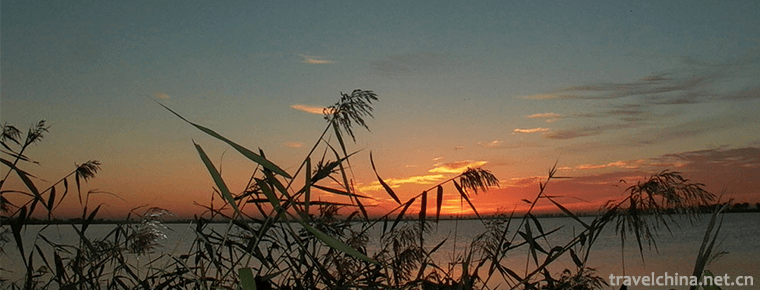
-
Portuguesestyle egg tarts
Portuguese egg tart, also known as Portuguese cream tower, caramel Mejit egg tart. Portuguese tart, known in Hong Kong, Macao and Guangdong, is a small cream pastry pie..
Views: 177 Time 2018-10-31 -
Ailao Mountain
Ailao Mountain, located in the middle of Yunnan Province, China, extends south of Yunling Mountains. It is the boundary between Yunnan-Guizhou Plateau and Hengduan Mountains. It is also the watershed .
Views: 440 Time 2018-11-01 -
Pork stomach stewed chicken
Belly chicken is a very traditional dish in Hakka area. It has a long history. It was first eaten by Hakka women when they were sitting on the moon, and it had a very good nourishing effect..
Views: 242 Time 2018-11-02 -
Tianjin Ancient Culture Street Tourist Area Jinmen Hometown
Tianjin Ancient Culture Street is located outside the east gate of the northeast corner of Nankai District of Tianjin City and on the West Bank of Haihe River.
Views: 223 Time 2018-11-24 -
Beijing Wildlife Park
Beijing Daxing Wildlife Park is located in the 10,000 Mu forest of Yuyuan Town, Daxing District. It is a large natural ecological park with animal protection, wildlife domestication and breeding and p.
Views: 99 Time 2018-12-26 -
Caoxi Hot Spring Holiday Resort
Caoxi Hot Spring Holiday Resort is located in Qujiang Maba, Shaoguan City. It is the largest hot spring villa resort in Guangdong Province. It is located on 106 National Highway under the outlet of Sh.
Views: 334 Time 2019-01-04 -
Great Wall of Ming Dynasty in Datong County
According to documents, the Great Wall of Qinghai Province in the Ming Dynasty was built in the middle of the Ming Dynasty. It lasted 51 years from 1546 to 1596..
Views: 160 Time 2019-01-07 -
Luzhi Ancient town
Yongzhi Ancient Town belongs to Wuzhong District of Suzhou City. It is located in the east of Suzhou City. It is 18 kilometers west of Suzhou City and 58 kilometers east of Shanghai..
Views: 100 Time 2019-02-06 -
Traditional flower arrangement
Chinese traditional flower arrangement art has a long history, extensive and profound, is the representative of Oriental flower arrangement art. It has the characteristics of dignified and elegant mod.
Views: 113 Time 2019-04-19 -
Yao an Bazi Cavity
On June 7, 2008, Yao'an Baziqiang, declared by Yao'an County, Yunnan Province, was listed in the second batch of national intangible cultural heritage list with the approval of the State Council. Heri.
Views: 311 Time 2019-07-11 -
Zhenba Folk Song
Zhenba folk song is a huge cultural wealth created and accumulated by Zhenba people for thousands of years, and it is an important component of Zhenba regional culture. Zhenba folk songs are very rich.
Views: 174 Time 2019-07-25 -
Southwest Jiaotong University
Southwest Jiaotong University is a national key university directly under the Ministry of Education. The first batch of national "double first-class", "211 project", "characte.
Views: 160 Time 2019-08-31


